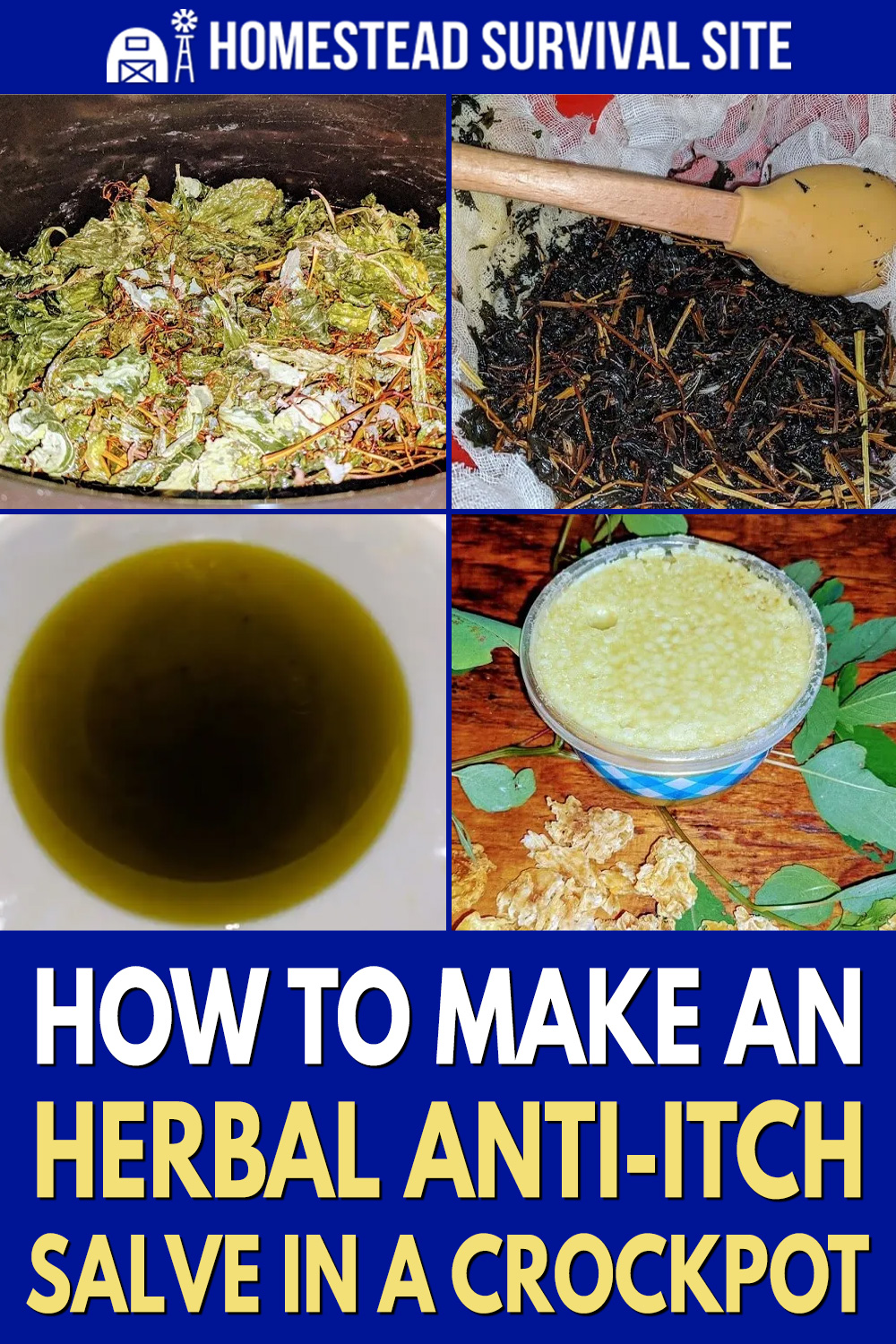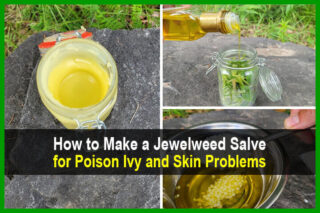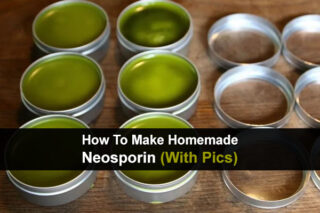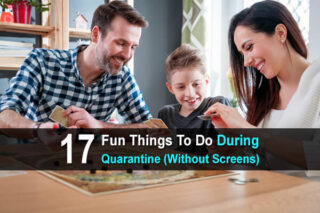Estimated reading time: 9 minutes
Disclaimer: I am not a medical doctor and nothing in this article should be taken as medical advice. Please talk to your doctor before using any of the herbs and/or remedies mentioned in this article.
One of the best anti-itch salves you can make is a jewelweed salve. It's great for treating poison ivy, bug bites, and other skin problems. But before you can make a jewelweed salve, you have to make a jewelweed infusion.
Want to save this post for later? Click Here to Pin It On Pinterest!
Making this infusion doesn't need to take weeks, or even hours laboring over a hot stove. An infusion of jewelweed (and plantain, for added herbal benefit) can easily and rather quickly be made in a Crock-Pot or any other slow cooker.
The process is simple and requires very little active attention throughout the two- to four-hour process. The only part of the jewelweed infusion making process that is even mildly tedious is the chopping or tearing of the leaves, stems, and possibly the flowers into small pieces.
This traditional homesteading task is a wonderful way to pass on skills to your children and grandchildren. Because all of the ingredients are natural and the slow cooker doesn't pose the same safety hazards as a hot pot on the stove, even toddlers can help mix up batches of salve.
However, adult supervision is still necessary because even set on low or warm, a Crock-Pot will put off enough heat that it can be startling.
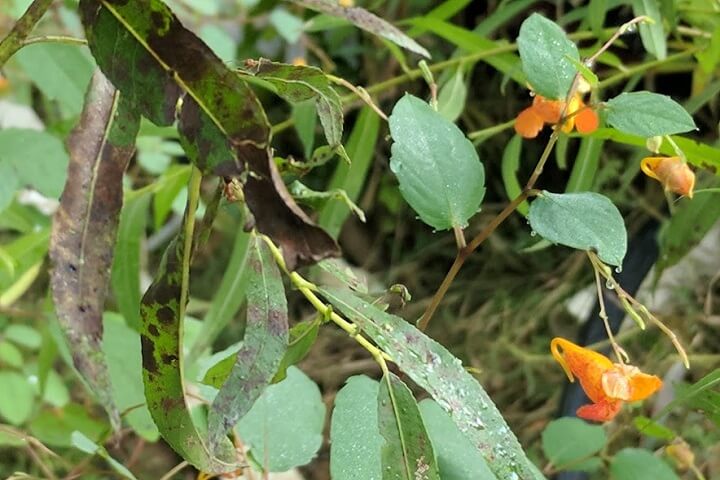
How Can A Jewelweed Infusion Be Used?
For centuries now, herbalists, pioneers, and Native Americans have used jewelweed infusions to not only make salves, liniments, and ointments, but they've also used it to make wound washes and even teas. For best results, only harvest jewelweed for use in homemade herbal remedies AFTER it has bloomed.
This so-called weed has been used to naturally treat acne, eczema, ringworm, psoriasis, poison ivy, and poison sumac. Jewelweed is often a natural base ingredient in anti-fungal, anti-inflammatory, and antihistamine home remedies.
Although jewelweed is a naturally growing plant, that doesn't necessarily mean it's safe to use internally or topically for everyone. I am not a medical professional of any type. Your healthcare provider should always be consulted before embarking on any type of natural remedy. An allergic reaction or drug interaction of mild, severe, or evenly deadly levels, could occur when using a plant that is often deemed safe.
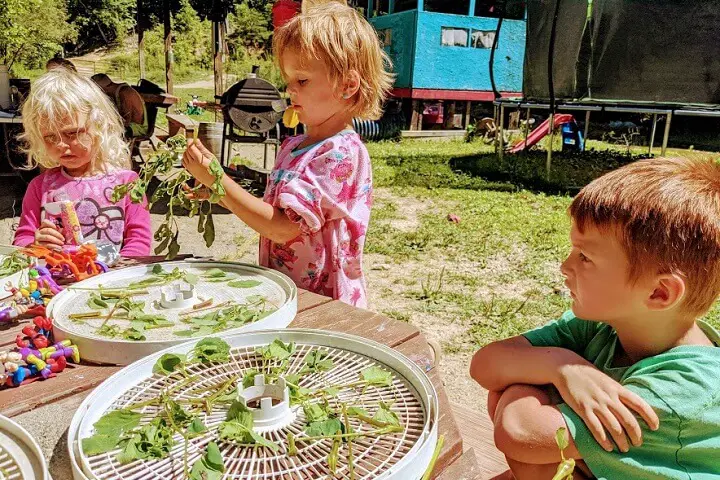
You do not have to dry the plant material, but it does remove moisture from the leaves and especially the stems. Drying the plants using either a solar dehydrator, electric dehydrator, or the oven on its lowest setting may help prevent the growth of bacteria and extend the shelf life of the infusion and salve.
Gathering, chopping, and drying the jewelweed (and any other plants you use in salve making) is a great way to get the children involved in the natural remedy making process and start teaching them some life-long self-reliance skills.
How To Make Jewelweed Infusion In A Crock Pot
- Gather the jewelweed stems, leaves, and even flowers that you will need to make the infusion. If mixing plantain into the infusion (which I highly recommend), use a ratio of roughly two parts jewelweed to one part broadleaf plantain leaves. Only forage for home remedy ingredients in a location where you are 100 percent sure that the area has not been sprayed by chemicals.
- Wash the plant parts and then inspect them carefully for signs of brown dead leaves, plant disease, and bug infestations. Only keep green healthy leaves and stems, as well as healthy-looking flowers.
- Pat the jewelweed parts down with a towel or allow to air dry.
- Rip or chop the plant parts into small bits to ensure their juices and nutrients are quickly absorbed into the carrier oil that will also be placed in the slow cooker.
- Place the jewelweed bits into the slow cooker.
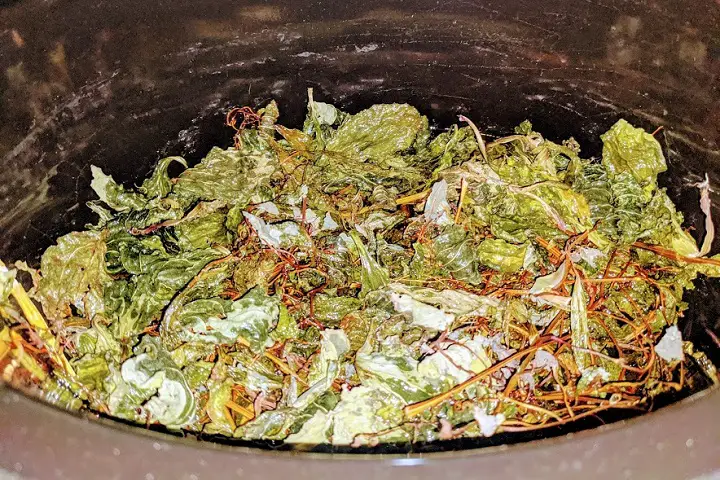
- Use the lowest heat setting on the device – this means the lowest food preparation setting and not the “keep warm” setting. Only use the warming setting at the end of the process if you are momentarily delayed in preparing for the next step, salve making.
- Use your favorite carrier oil to pour into the jewelweed infusion mixture. There is no exact measurement here, you simply want to make sure all of the plant parts are well covered and thoroughly coated. If the carrier oil “bakes down” during the infusion processing, simply pour a little more in to once again cover the plant parts. I highly recommend using olive oil, coconut oil, or almond oil to make the infusion.
- With your hand, mash the jewelweed plant parts gently to push them down into the thick oil and prevent them from doing too much floating on the surface of the mixture.
- You can cover the slow cooker with the glass lid or leave it off during the infusion processing. Many folks prefer leaving the lid off, but I typically leave the lid on during the first hour to heat the oil up more quickly and start the infusion process rolling. I have made the salve countless times with the lid completely off, on for a little while, and on the entire time, and I have experienced no significantly different results or potency levels.

- At the one hour mark, gently stir the jewelweed infusion and make sure enough oil is remaining in the slow cooker to keep the mixture completely covered.
- Repeat step 10 at the two and three-hour marks.
- At the four hour mark, carefully strain the jewelweed infusion mixture through a cheesecloth covered fine strainer, with the liquid you want to keep flowing into a bowl below. I often place three layers of cheesecloth into the strainer to avoid plant matter seeping through. Plant matter will cause mold, mildew, and fungus to grow in the stored infusion or salve. Thus, do not press too firmly to get every last drop of the liquid through the cheesecloth or risk breaking up plant matter into bits small enough to be pushed through and into the liquid catchment bowl.
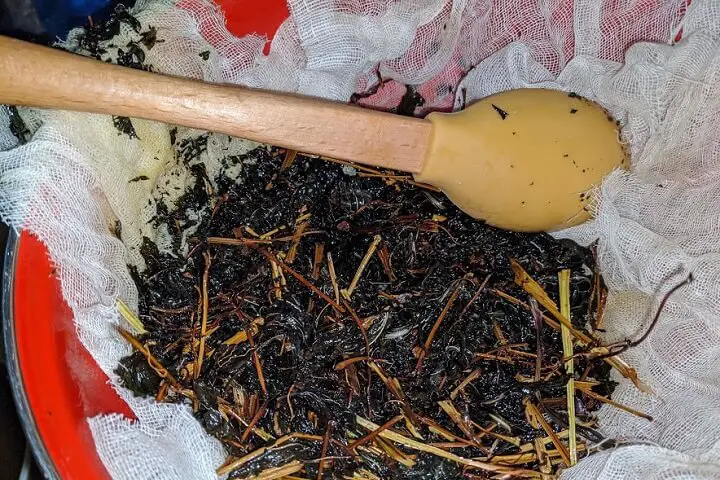
- If you notice natural matter or a lot of thick brown spots in the carrier oil, strain it through some clean cheesecloth and into another bowl again to remove as much debris as possible.
How To Make Jewelweed Salve In A Slow Cooker
- Wash and dry the slow cooker used to make the jewelweed infusion. It is best to do this while the infusion is draining through the cheesecloth because you want to get the liquid back into the Crock-Pot while it is still warm.
- Measure the jewelweed infusion.
- Pour the infusion into the slow cooker and set the device on its lowest, but not the “keep warm” setting.
- You will need to put beeswax into the slow cooker at a ratio of approximately 4 parts carrier oil to 1 part beeswax. This figures out to roughly 1 cup of jewelweed infusion to three tablespoons of wax. Using beeswax pastilles makes the measuring process both easier and more accurate and speeds up the melting process once they are poured into the slow cooker.
- Stir the beeswax into the infusion so that it completely combines.
- You can but do not have to, stir the beeswax again during the melting process. It takes approximately half an hour to 45 minutes for the wax to melt completely, depending on how large a batch of salve you are making. I usually make a batch that contains roughly three to four cups of jewelweed infusion, and I base my melting times on a recipe ratio of that amount. If you think the beeswax pastilles are all melted but are not sure, take a photo of the inside of the slow cooker with the flash turned on. This little trick can help prevent you from removing the mixture too soon by revealing still round and intact wax bits that have only thinned down.
- Pour the jewelweed salve mixture into containers with a firm fitting lid while the mixture is hot. You can use a spoon or a coffee cup to dip the mixture out of the slow cooker.
It usually takes 12 to 24 hours for the jewelweed salve to harden both completely and thoroughly. Any plant matter that was allowed into the mixture will settle at the bottom and be a shade of mild to dark brown. It reminds me of the look of a graham cracker pie crust.
The appearance of this brown matter does not mean the salve needs to be thrown out, but it does mean the shelf life will be shorter and that it needs to be used quickly. Check such a salve container for signs or scents of mildew growth before using, and do not expect the container to last much longer than 30 days.
When prepared and stored properly in a cool and dry place out of direct sunlight, jewelweed salve typically remains shelf-stable for at least one year.
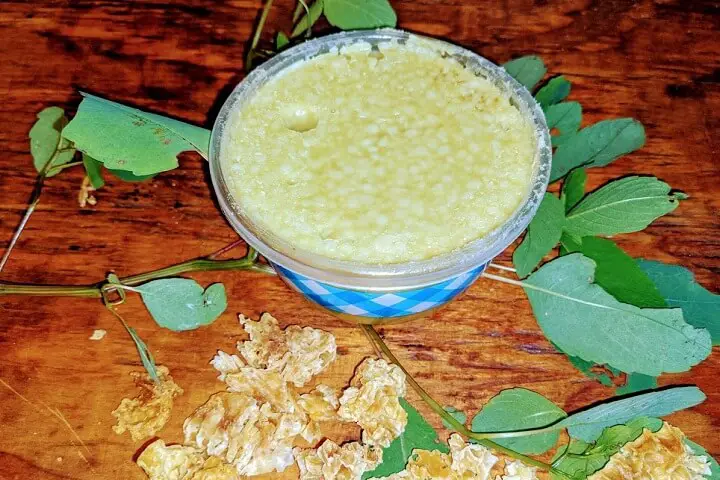
Like this post? Don't Forget to Pin It On Pinterest!



